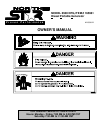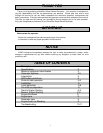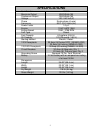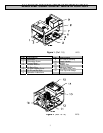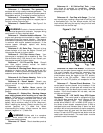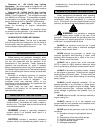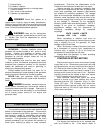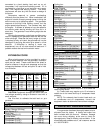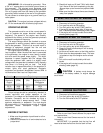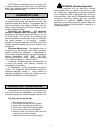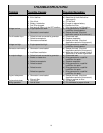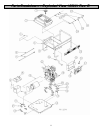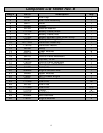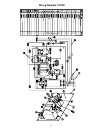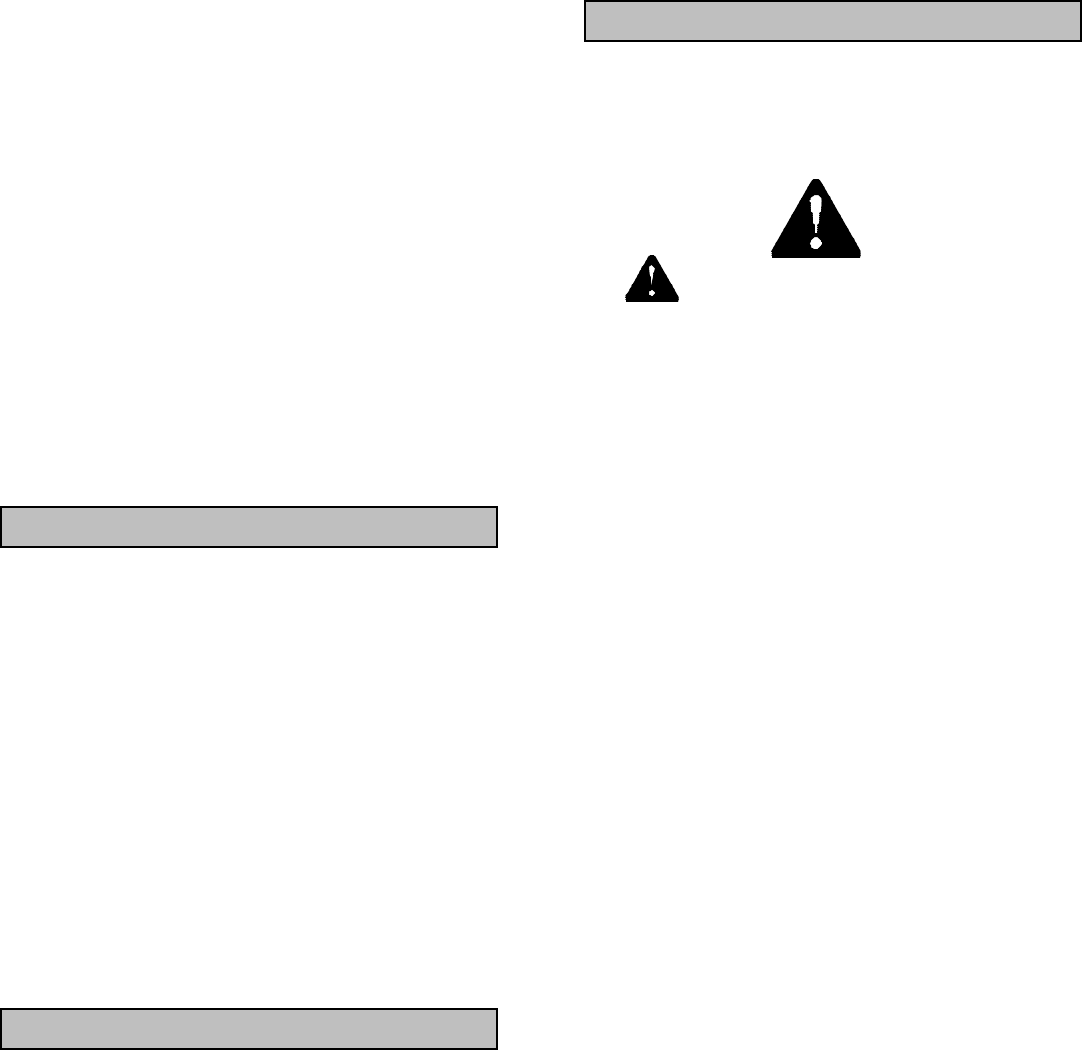
5
Reference 19 - 120 Volt-30 Amp Locking
Receptacle. The control panel is equipped with one
NEMA L5-30R receptacle. This receptacle accepts
only NEMA L5-30P plugs.
Reference 20 -120/240 Volt-30 Amp Locking
Receptacle. The control panel is equipped with one
NEMA L14-30R receptacle. This receptacle accepts
only NEMA L14-30P plugs. This receptacle is popular
for connection to a transfer switch for home standby
power. See item #16412 in the NORT HERN catalog.
Reference 21 - Hour Meter. The hour meter
allows for monitoring of engine maintenance
schedules.
Reference 22 - Voltmeter. The voltmeter allows
for monitoring of the generator. The needle should be
in the green area for all load conditions.
GENERATOR FEATURES NOT SHOWN
Fuel Shut Off Valve. The fuel tank is equipped
with a fuel shut off valve. Always turn the fuel valve to
the off position when the generator is not in use. The
valve is located underneath the fuel tank.
INTRODUCTION
Before starting your generator, thoroughly study
the instructions and cautions in this manual to assure
you are fully acquainted with the operation of all
components of this generator. Proper preparation,
operation and maintenance will result in operator
safety, best performance and long life of the generator.
For detailed engine operation and maintenance always
refer to the Hatz engine owner’s manual furnished with
the generator.
NorthStar is constantly improving its products.
The specifications outlined herein are subject to
change without prior notice or obligation. The
purchaser and/or user assumes liability of any
modifi cation and/or alterations on thi s equipm ent from
original design and manufacture.
Before using, the user shall determine the
suitability of this product for its intended use and
assumes liability therein.
ANSI SAFETY DEFINITIONS
DANGER indicates an imminently hazardous
situation which, if not avoided, will result in death or
serious injury. This signal word is to be limited to the
most extreme situations.
WARNING indicates a potentially hazardous
situation which, if not avoided, could result in a
death or seri ous i nj u ry.
CAUT ION indicates a potentially hazardous
situation, which if not avoided, may result in minor or
moderate injury. It may also be used to alert against
unsafe practices.
RULES FOR SAFE OPERATIONS
Safety precautions are essential when operating
this generator. Respectful and cautious operation will
considerably lessen the possibilities of a personal
injury. This manual will warn of specific personal injury
potential, and these will be designated by the symbol:
WARNING This generator is equipped
with a grounding screw located on the rear of the
generator. Always complete the grounding path from
the generator to a copper pipe/rod that is driven into
moist earth, to prevent electrical shock.
ALWAYS use electrical cords that are in good
condition. Worn, bare, frayed or otherwise damaged
cords can cause electric shock.
NEVER operate the generator, or handle any
electrical equi pment while standing i n water, whi le
barefoot, while hands are wet or while in the rain or
snow. Electric shock may result.
ALWAYS use a ground fault circuit interrupter
(GFCI) in damp or highly electrical conductive areas
and on construction job-sites to prevent electric shock.
ALWAYS disconnect the battery before working
on the engine or generator. Disconnect the negative
cable first then the positive cable. The key should be
in the OFF position when disconnecting or connecting
battery cables.
ALWAYS provide adequate ventilation. Do not
operate generator in any enclosed or narrow space.
Engines consume oxygen and give off deadly carbon
monoxide poisonous gas. Improper ventilation will
cause damage to generator and possible injury to
people.
NEVER touch hot muffler, hot exhaust manifold or
engine cooling fins.
ALWAYS remove all oil or fuel deposits and
accumulated dirt from generator and immediate area.
Keep generator and engine clean.
NEVER operate the generator under the following
conditions:
A. Excessive change in engine speed, slow or
fast.
B. Overheating of load connecting devices.
C. Sparking or arcs from generator.
D. Loss of electrical output.
E. Damaged receptacles.



